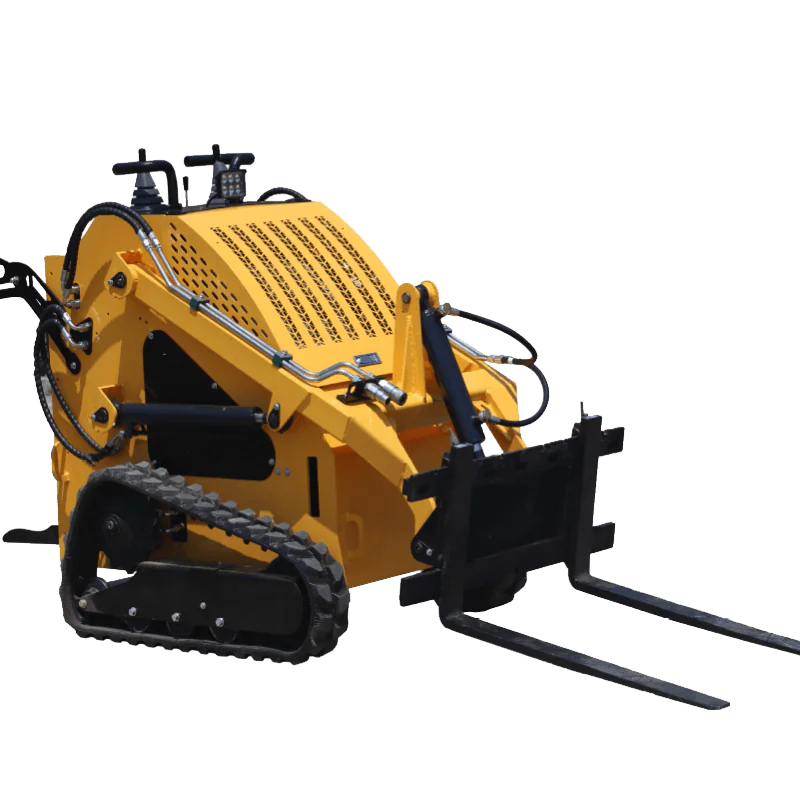When it comes to construction or landscaping projects, selecting the right equipment is crucial for success. Mini excavators are versatile machines that can handle a variety of tasks, from digging trenches to demolition work. But with different sizes and specs available, how do you choose the right mini excavator for your project? This comprehensive guide will help you understand the factors to consider so you can get the job done efficiently and effectively.

What Size Mini Excavator Do I Need?
One of the first questions you might ask is, “What size mini excavator do I need?” The size of the excavator determines its capabilities, including how deep it can dig and how much it can lift. Mini excavators come in various sizes, ranging from small micro models to larger machines that approach the size of standard excavators.
Understanding Mini Excavator Sizes: A Comprehensive Guide
Mini excavator sizes are typically categorized by their operating weight and dig depth. Understanding these specifications is key to selecting the right machine.
- Micro Mini Excavators: Weighing less than 1 ton, these are perfect for tight spaces and small-scale projects.
- Small Mini Excavators: Weighing between 1 to 3 tons, suitable for landscaping projects, digging trenches, and minor demolition.
- Standard Mini Excavators: Weighing between 3 to 10 tons, these machines offer more power for heavy lifting and deeper digging.
Different Mini Excavator Sizes Explained
Let’s delve into the different sizes of mini excavators:
- 0.8 Ton Mini Excavator: Ideal for confined spaces and light-duty tasks.
- 1 Ton Mini Excavator: Offers a balance between size and power.
- 1.5 Ton Mini Excavator: Suitable for moderate digging tasks and can handle attachments.
- 2 Ton Mini Excavator: Provides more engine power and dig depth for larger projects.
How to Choose the Right Mini Excavator for Your Project
Choosing the right mini excavator involves assessing your project needs:
- Project Requirements: Determine what tasks you’ll be performing. Do you need to dig trenches, perform demolition, or handle heavy materials?
- Work Area: Consider the size of your job site. Tight spaces may require a compact machine with zero tail swing.
- Dig Depth and Reach: How deep do you need to dig? Mini excavators can typically dig from 6 to 15 feet deep.
- Operating Weight: This affects transportability and ground pressure. Lighter machines are easier to transport and cause less ground disturbance.
Factors to Consider When Selecting a Mini Excavator
Here are important factors to consider:
- Operating Weight and Size: A smaller excavator is suitable for confined spaces, while a larger one handles bigger tasks.
- Dig Depth: The dig depth determines how deep you can excavate. Ensure the excavator meets your project’s depth requirements.
- Lifting Capacity: If you’re lifting heavy materials, you’ll need an excavator with sufficient capacity.
- Attachments: Consider what attachments you’ll need, like buckets, augers, or hammers.

Mini Excavator Specs: What to Look For
When reviewing mini excavator specs, pay attention to:
- Engine Power: More power means better performance in tough conditions.
- Hydraulic Flow: Affects the efficiency of hydraulic attachments.
- Bucket Size and Breakout Force: Determines how much material you can move and how effectively you can excavate.
- Tail Swing: Zero tail swing models are ideal for restricted areas.
Renting a Mini Excavator: What You Need to Know
If you’re considering renting a mini excavator, keep these tips in mind:
- Equipment Rental Options: Many companies offer a range of sizes. Choose one that suits your project.
- Rental Period: Estimate how long you’ll need the excavator to avoid extra charges.
- Operator Skill Level: Ensure you or your operator are familiar with the equipment.
- Transport Logistics: Plan how you’ll transport the excavator to and from the job site.
Attachments That Enhance Your Mini Excavator’s Capabilities
Mini excavators are versatile due to various attachments:
- Buckets: For digging and trenching.
- Augers: Ideal for drilling holes for posts or planting.
- Hammers: Useful for demolition tasks.
- Thumbs: Assist in grabbing and moving objects.
Having the right attachments can greatly expand what your mini excavator can do.
Operating Weight and Dig Depth: Understanding the Basics
- Operating Weight: Refers to the weight of the machine with fuel and a standard operator. It impacts mobility and ground pressure.
- Dig Depth: Determines how deep the mini excavator can dig. Common models range from 6 to 15 feet deep.
Understanding these specs ensures you select an excavator that meets your project requirements.
Choosing the Right Mini Excavator for Tight Spaces
Working in tight spaces requires careful selection:
- Compact Size: Smaller machines can navigate through narrow passages.
- Zero Tail Swing: Prevents the rear of the excavator from extending beyond the tracks.
- Flexible Attachments: Adapt to various tasks without needing multiple machines.

Tips for Getting the Job Done Efficiently
To get the job done effectively:
- Plan Ahead: Understand your project’s needs before selecting equipment.
- Operator Training: Skilled operators can work faster and safer.
- Maintain Equipment: Regular checks prevent breakdowns.
- Use the Right Attachments: Ensure you have the proper tools for each task.
Summary: Key Takeaways
- Assess Your Project Needs: Understand the tasks, space, and depth requirements.
- Choose the Right Size: Select an excavator with suitable operating weight and dig depth.
- Consider Attachments: Enhance versatility with the right tools.
- Plan Rentals Carefully: If renting a mini excavator, consider rental terms and logistics.
- Safety First: Ensure operators are trained and equipment is maintained.
By selecting the right mini excavator, you’ll ensure the success of your project.
For more information on specific models, check out these links:










